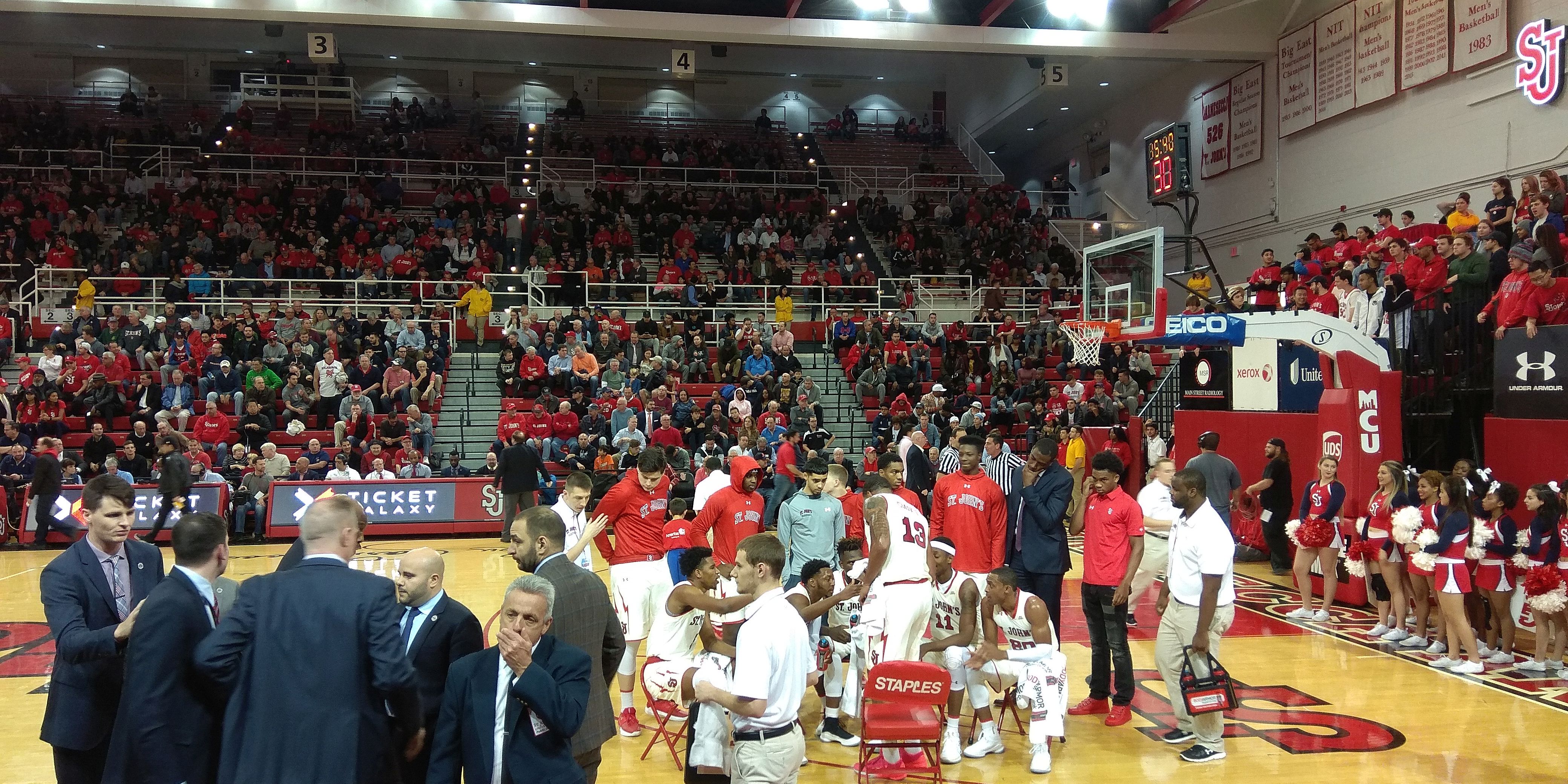Recently I spent three weeks in United States where beside NBA, G-League, High/Prep School, I saw 20 colleges in action. Of course I watch a lot of college hoops in order to be able to help coaches to find the right fit for their program on European market. However if you experience things live they are the same and different than on TV screen at the same time. This trip helped me to realize the real physical requirements and pace of the game in USA. Also backstage access was crucial to understand the organization culture and segregation of duties. Here are some of my thoughts.
COACH INTERACTION
Clearly executives in USA are more personable people. There is no fake and overly cold professor-student type of distance between players and coaches that you can notice in Europe at times. What I have seen in States totally debunked the myth that so called player’s coaches struggle to be demanding and keep the uncompromising discipline. Those who can walk the fine line between hard work and laid back stuff are more enjoyable to work with and can give you the same results. I remember at Wagner practise (which was the most intensive one I ever witnessed) how guys were preparing mentally for exhausting workout. They entered the gym clapping, singing, joking and doing all the little things that could help them survive the grind. Once the first whistle sounded approach was back to army strictness mode and the other way round after last buzzer. Campus life definitely helps in that regard. Members are gathered together which helps to build team spirit and it’s more than less time of their life. Last moment to enjoy themselves before adult responsibilities hit them.
Speaking about practise, apart from incredible intensity, there is a big focus on simulating game situations. Most of the drills are being made with the shot clock. Some assistants also take part in them actively.
Another crucial thing in collegiate environment is a sense of mission. For example in the NBA you receive pretty much ready products and your job contains from 90% of coaching and the rest is missing 10%. In college proportions are more like 60/40. You have to lead by example, keep shaping young athlete’s characters, be part of the community and never forget that your picture must to be bigger than just basketball.
On the professional level there may be more distractions on the player-coach line like cultural difference or language barrier and at the end of the day every method is successful if you only win. I just wish more people could realize that if some NCAA graduate struggles during his rookie year in Europe it doesn’t necessarily mean he is not good enough or cannot fit in the league. Sometimes it may be because of the coach who never talks to him which makes him confused what is his role on the team and whether he plays well or bad.
COMPETETIVENESS
I had a few conversations with assistants of elite coaches. When asked what is it like to work with them usually those are the answers: “Oh man I love it but it’s not easy”, “You have to be available”, “You must posses work ethic and understanding family”. This is exactly what I saw after the game or workout was over. Most kept sitting in the office brainstorming or watching other NCAA games. Those guys really work a lot!
Sport is proved as the most effective path out of poverty. The tuition in American colleges is extremely expensive and daily grind is the only way to get there if you come from lower class family. Often players from unprivileged environment are overachieving. They are gym rats and do everything on the court with poise. Those kids got used to fight to survive cause they faced it on daily basis. You can easily find the equivalent in Europe – two elite European basketball nations Serbia and Lithuania. Cultural setting they were raised in from a historical standpoint influenced their chance to become successful. It’s not like they are born with more talent, they simply work more and harder than others. That is huge factor why wealthy countries like let’s say Netherlands, where kids come from comfortable background and are a bit spoiled, don’t have a will to overcome all the hardships in order to make it big.
Raising the competition is the best way to improve the quality of product on any given market. Prospects in average basketball countries don’t have to sweat in practice to play big minutes. That is why their transition to senior level isn’t smooth as suddenly they need to make a name for themselves again. Other but equally crucial thing is patience. Those who are continuously willing to grind after results don’t show up for 3, 6, 9 months are the one to admire and be finally given the chance down the road. On the other hand stock of those who had too big expectations and escaped early usually keeps going down unless it was really bad fit for them.
CONFIDENCE
There is a strong correlation between the topic and competetiveness. You have to trust your skills in order to show the best you can do. Most of the high level athletes have some swag and are borderline cocky. Early exposure that players face in USA definitely helps in this aspect. If you are heavily recruited college prospect you may develop texting relationship with Drake or occasionally have NBA players cheering for you on the stands. In some cases it makes teenagers feel like they rule the world. That is what we are affraid of in Europe. Many times I heard opinions like “you should not hype him”, “don’t make this interview cause he will get big head”. I do believe that those who are prepared for the fame and can remain down to earth and hard working have the biggest chance to succeed.
There are probably many guys looking way better during the practises than game situations and often confidence is what separates good and great players. Americans definitely take advantage from all the buzz around them. You can see this on exposure camps like Nike Hoop Summit, Basketball Without Borders Global edition etc. They are familiar with scouts and executives following them few meters away. They know what to say in interviews. They have killer instinct and next play type of mentality.
GUARDS
It is obvious that athleticism of American backcourt is unmatchable for 99% of Europeans on their position. Most of the teams in our continent look for impactful 2/1 or 1/2 guards able to make the difference. There are tons of great players in America and obviously not all of them are tall. According to research ridiculous 17% of 7-footers in USA between 20-40 years old play in the NBA but only 0.07% people from 6’6-6’8 range made it to the best league in the world. This number goes even more down for guards.
Watching practices of mid major colleges made it more clear than ever in my eyes. I believe that even pick up basketball is good to evaluate. Guys are less affraid to try new moves or take the risk. It shows flashes of another assets and allow you to realize how close they are to add certain things to their skillset. During various 1 on 1 drills I was amazed by ability to make plays and utilize physical tools by African-American student-athletes. The only way to compete, unless you are genetic freak like Goran Dragic, is IQ advantage. If you see more on the court, can read pick and roll well, or anticipate what is about to happen then you can survive.
Last 20 years amount of white players in National Basketball Association decreased from 64 to 39. There is 10 times more Division I colleges than NBA teams but still majority of NCAA coaches look for wings and bigs. So as J.J. Reddick once said: “If you’re a 5-9 white guy, good luck to you, bro. Good luck to you, man.”
GEAR
Who doesn’t love that? Even I was happy as a clam after occasionally receiving t-shirt during my visit. While simple uniforms are pretty much the norm all over the world now, apparel giants like Nike, Adidas or Under Armour seems to provide almost unlimited gear amount for students-athletes. And I didn’t attend elite schools where fitted jerseys, shorts with special dri-fit material, custom shoes and all kind of warm up stuff is nothing surprising. Everybody wants to look good nowadays and oldschool era when the more equipment player had on his body the worse he was is the past now. Moreover you can represent your college not only on game day but most of the time wherever you go. Definitely not a major thing but small things make difference also on a major level.
I would also add gym access in this paragraph. How cool is that to open the gym at midnight using fingerprints reader to have shootaround? Of course they don’t do this every day. It’s a myth from the movies that student athletes don’t have to study much (how many one and done players per year we have?) and college players have a lot of non-sport obligations. Anyway if you feel like taking extra practise to release your anger after bad home game in most cases you can make it.
SUMMARY
I often heard things like: “In Europe you play different”. First of all it is hard to lump together all the styles from our continent as we do have variety of them combined with language and cultural differencies. Also big factor why most of us teach basketball differently and put bigger emphasis on fundamentals, versitality and teamwork is that we simply lack elite athletes. If we had them maybe we would also work more on utilizing their scoring moves as it is more simple, looks spectacular and remains equally efficient.
I am not the one to judge the coaches as I have tremendous respect for them. In my job I just go the tournaments and select best gems to watch. They are the one who pass them all knowledge which is difficult and extremely time consuming process. I don’t push players much to make them go to USA. I believe it is the matter of finding right fit for further development and each case is individual. So I am not going to finish with conclusion that here or there is better. But I do believe that remaining open minded and blending what is best from all worlds is the best way to create something special. That’s why I can recommend taking such trip to everyone.





